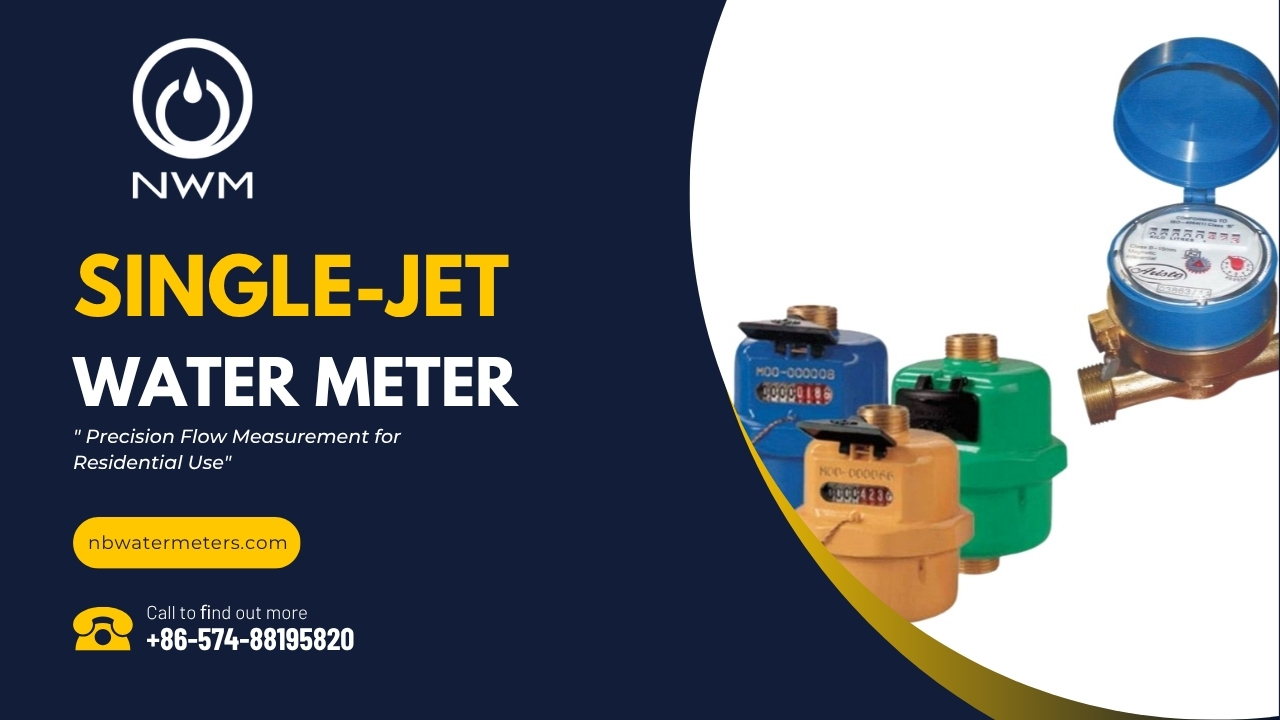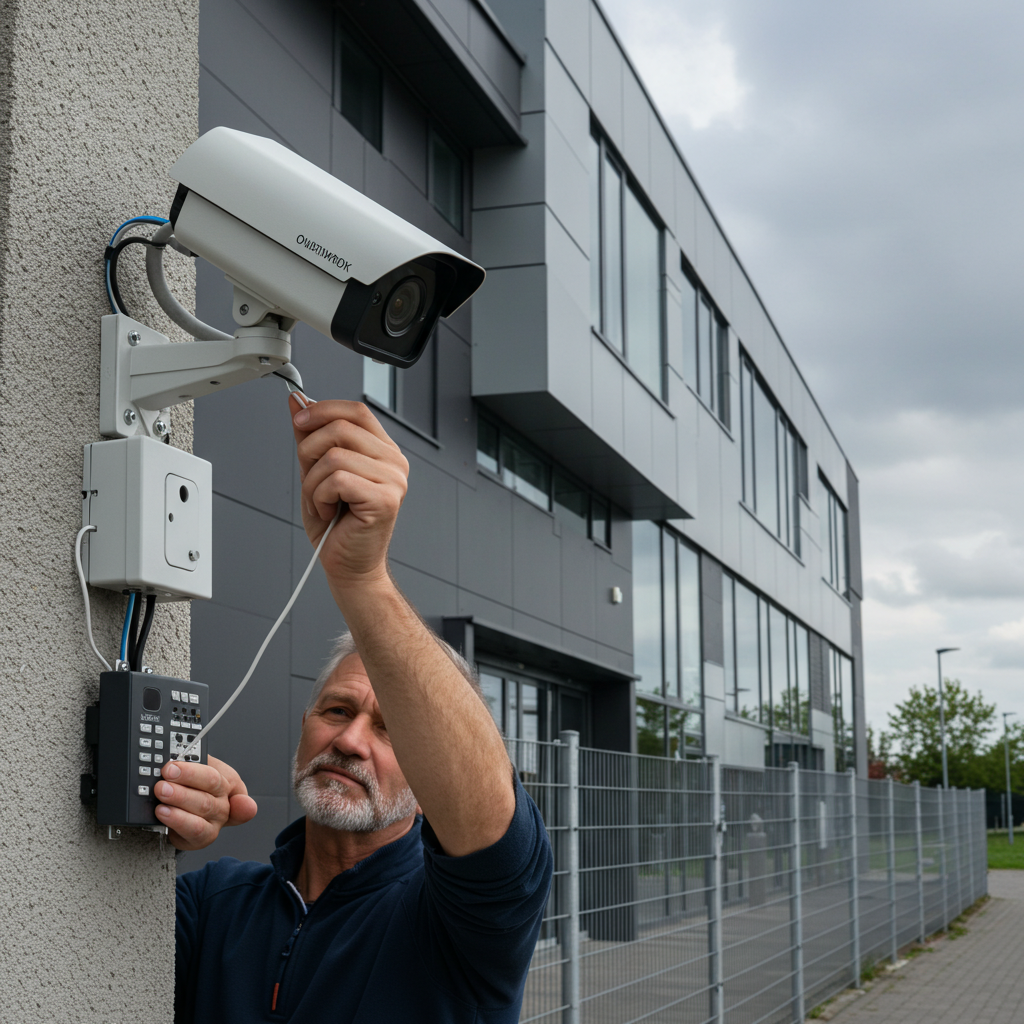A multi-jet water meter is a type of volumetric flow meter that measures water usage by channeling water through multiple jets onto an impeller. Unlike single-jet or turbine meters, the multi‑jet design splits the flow into several streams, impinging on a central impeller. The resulting rotation is proportional to flow, accurately translating mechanical motion into usage data.
These meters are prized for their durability, accuracy, and resistance to wear—qualities that make them common in residential, commercial, and industrial water systems.
How It Works: The Mechanics Behind the Meter
-
Inlet Strainer
During water entry, a fine mesh strainer filters out debris to protect internal components, ensuring long-term reliability. -
Jet Chamber Distribution
Water is piped through multiple nozzles (jets) arranged around the impeller. This multi-directional flow stabilizes rotation and reduces the impact of velocity changes. -
Impeller Rotation
The jets cause the impeller to turn. Its speed corresponds to the flow rate, typically measured in liters per minute (L/min) or cubic meters per hour (m³/h). -
Magnetic or Mechanical Transmission
The impeller’s rotation is conveyed to a register (dial or digital readout) either magnetically or through gearing. Magnetic coupling ensures sealing between the wet chamber and display, preventing leaks and eliminating potential for contamination. -
Totalizer (Register)
The final stage sums the rotation—totalizing the water volume passing through—for readout and billing purposes.
Types & Variations
While the basic concept remains consistent, multi‑jet water meters come in a variety of formats:
-
Dry‑dial vs. Wet‑dial Registers
-
Dry-dial: The register is isolated from the wet components, minimizing fogging and making reading easier.
-
Wet-dial: The register is in contact with water, simpler in design but can fog over.
-
-
Single-supply vs. Dual-supply
Dual-supply models have separate inlets for hot and cold water, ideal for systems requiring thermal measurement. Single-supply is most common and cost-efficient. -
Nominal Sizes (DN)
Range from DN15 (≈½”) to DN50 (≈2″) for domestic use, with larger sizes available for industrial flow rates. -
Pulse-Output or Remote-Reading Models
Advanced meters include features for integration with smart systems, enabling automated data collection and remote monitoring.
Advantages & Why Choose Multi‑Jet Meters
Accuracy & Stability
The multi‑jet’s design reduces turbulence and recirculation, delivering accuracy within ±2% of actual flow—trusted across flow ranges.
Durability & Low Maintenance
Due to their robust impeller and minimal moving parts, multi‑jet meters resist wear from sand or particulate-laden water.
Wide Flow Range
They manage both low and high flows smoothly, better than many turbine-style meters.
Leak Resistance
Magnetic coupling avoids shaft seals, drastically reducing the risk of leakage—a crucial feature for hygiene and safety.
Cost‑Effective & Versatile
Affordable, easy to manufacture, and available in diverse configurations, multi‑jet meters are adaptable across applications.
Installation & Best Practices
-
Straight Pipe Run Requirements
Maintain at least 5× the pipe diameter of straight inlet run and 2× outlet run to ensure laminar flow into meter. -
Orientation
Horizontal installation is most common; vertical installation is possible but must be explicitly supported by the manufacturer. -
Pressure Limits
Confirm the meter’s maximum working pressure and install a pressure reducer if household pressures exceed specifications. -
Temperature Constraints
Standard meters usually handle up to around 30–40 °C. For hot water applications, you’ll need a meter rated for higher temperatures. -
Regular Inspection & Cleaning
Periodic checks to clean the filter and verify register accuracy help prevent malfunctions and maintain billing integrity.
Applications Across Sectors
-
Residential: Perfect for billing and conservation monitoring in single‑family homes and apartments.
-
Commercial & Industrial: Suited to offices, factories, institutions with moderate to high water demand.
-
Irrigation & Agriculture: Reliable under variable flows; especially important in remote areas where maintenance must be minimal.
-
Hot Water Systems: Dual‑supply meters with high‑temperature tolerance measure separate flows for hot systems accurately.
Common Misconceptions
-
“All water meters are the same.”
Not true. Multi‑jet meters have distinct mechanical properties offering better accuracy and durability than single‑jet or piston types. -
“Digital is always better.”
While digital smart meters have their benefits, a simple mechanical dry‑dial multi‑jet meter may offer greater longevity with no power source. -
“Miniaturization compromises accuracy.”
Small DN15 meters still retain high accuracy—even better at capturing low flows than larger turbines—thanks to their multipoint jet design.
Buying Considerations: What to Look For
When choosing a multi‑jet water meter, consider:
| Feature | Why It Matters |
|---|---|
| Accuracy Class (e.g., Class B, Class C) | Defines allowable error margin—Class C (±1.5%) is more precise. |
| Temperature & Pressure Ratings | Ensures safety and longevity under local conditions. |
| Register Type (Dry vs. Wet) | Dry registers offer better visibility and resist condensation. |
| Meter Size & Flow Range | Oversizing leads to inaccuracy at low flows; undersizing creates pressure drop issues. |
| Material & Coating | Bronze or brass construction with anti-corrosion coating enhances lifespan. |
| Communication Features (Pulse/LoRa/MBus) | Future-proofs for smart meter integration. |
| Certifications (e.g., ISO 4064, MID) | Ensures compliance with quality standards in many countries. |
Typical Lifespan & Maintenance Expectations
-
Lifespan: Expect 10–15 years or more in clean, residential environments. In harsher conditions, proactive maintenance can extend life.
-
Maintenance: Simple—occasionally clean the inlet filter and check that the dial reads smoothly. Most issues involve register fogging in wet-dial types, easily resolved by replacing with a dry register.
Alternative Meter Types & Comparison
-
Turbine Meters: Use a single, central turbine—accurate but less durable, especially in low-flow or high-turbidity conditions.
-
Ultrasonic Meters: Non‑mechanical, high precision—but costlier and dependent on continuous power.
-
Magnetic Meters (Magmeters): Excellent for dirty water, but expensive and less common in residential settings.
-
Single‑Jet & Piston Meters: Simple and cheap but suffer from early wear and limited accuracy.
Compared to these, multi‑jet meters strike a balance of cost, accuracy, and reliability—especially where power or digitization aren’t priorities.
FAQs
Q: What is the difference between dry‑dial and wet‑dial registers?
A: Dry-dial isolates the display from water, preventing fog and corrosion; wet-dial is simpler and cheaper but may fog and is less visible.
Q: Can a multi‑jet meter handle particles or sand in water?
A: Yes—its multiple jets and robust impeller are resistant to wear, and most include a strain screen for protection.
Q: Are multi‑jet meters suitable for smart metering systems?
A: Definitely—models with pulse outputs or integrated digital modules (e.g., M-Bus, LoRaWAN) are available.
Q: What accuracy can be expected?
A: Generally within ±2% across a wide flow range; higher-precision classes (±1.5%) are also available.
Conclusion
Multi‑jet water meters are the go-to solution for reliable, accurate, and durable water measurement in a variety of settings—from homes to farms to industrial sites. Their clever design delivers smooth operation, even with challenging water conditions, and the availability of both basic mechanical models and advanced smart-integrated versions ensures adaptability for every need.

